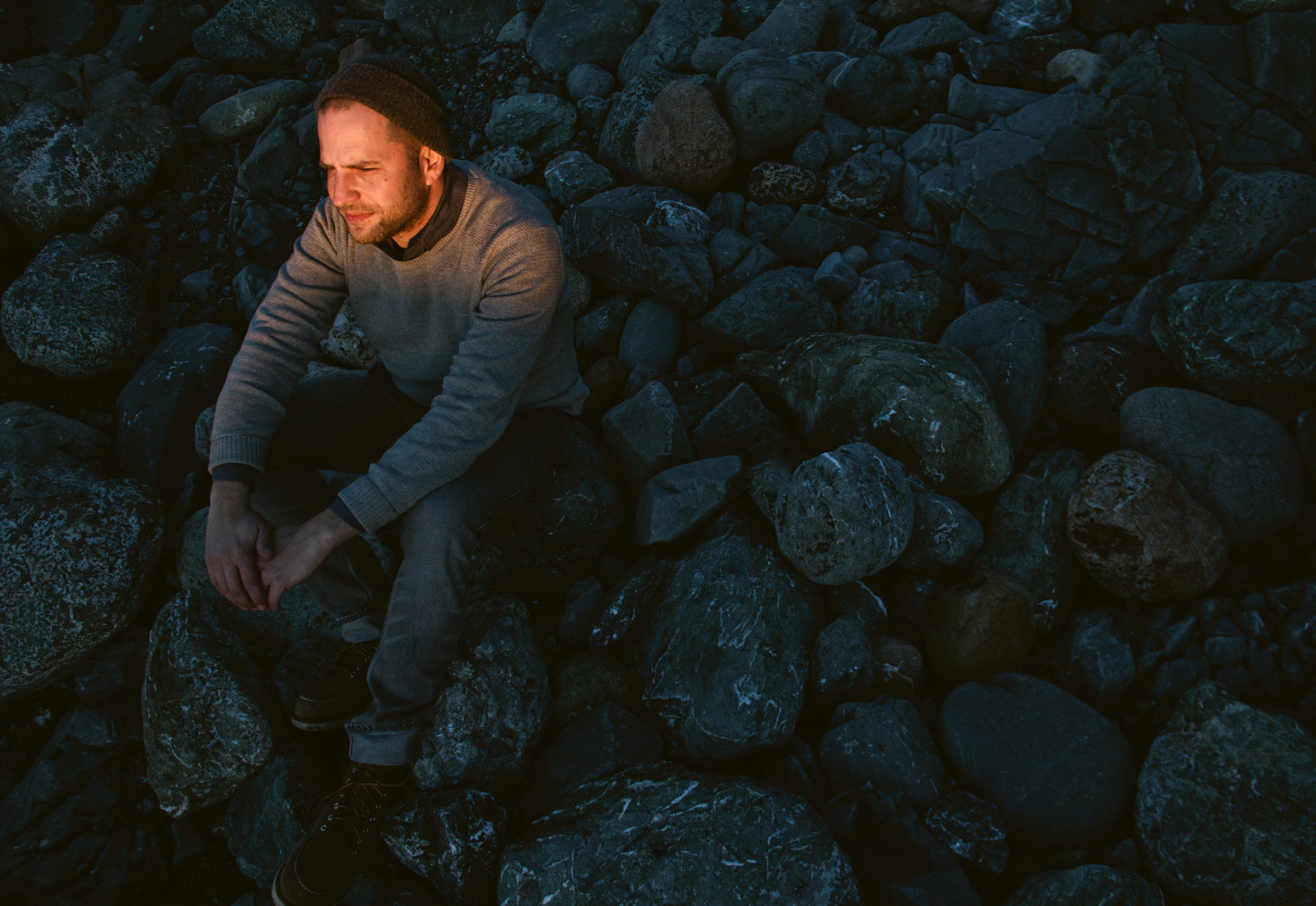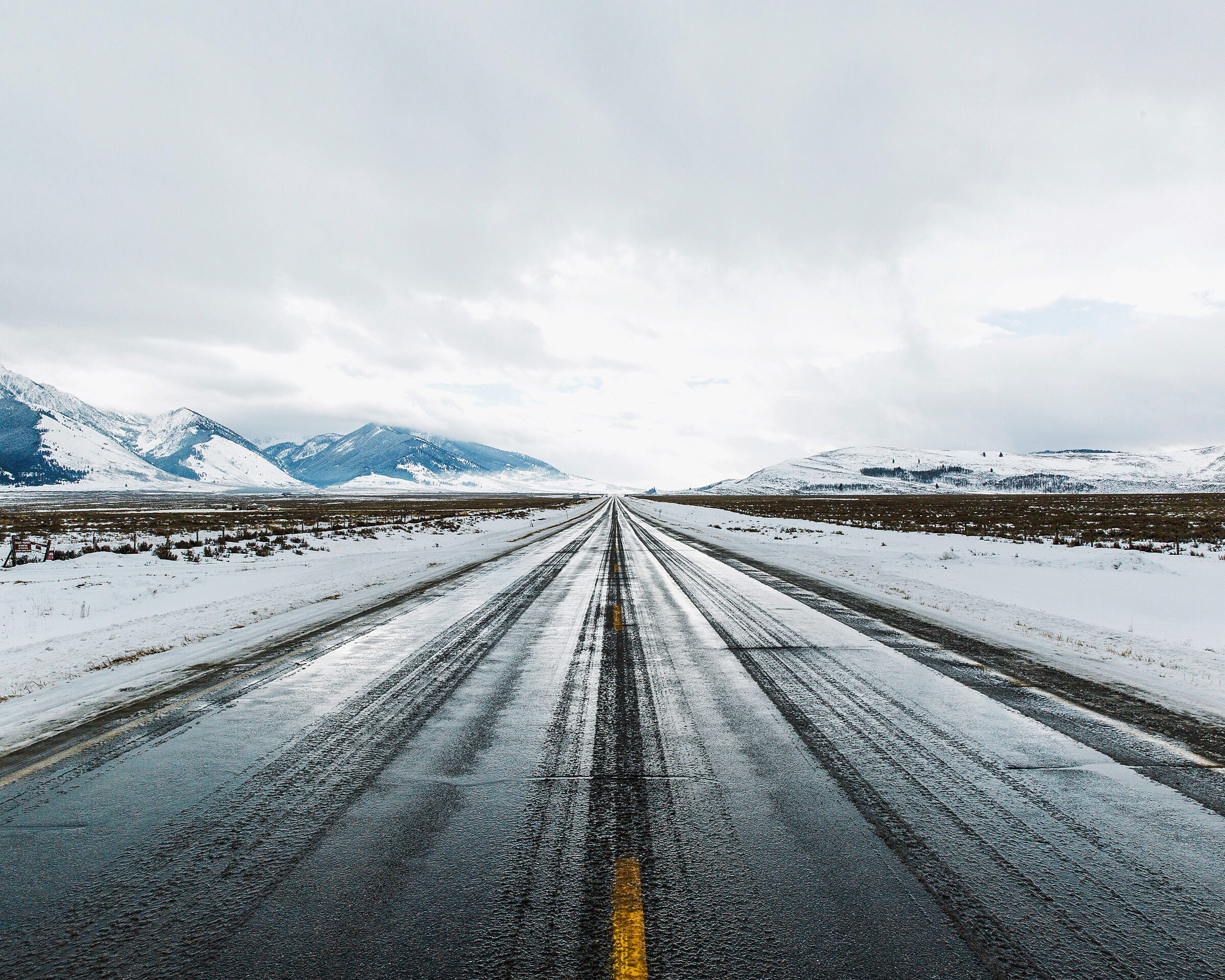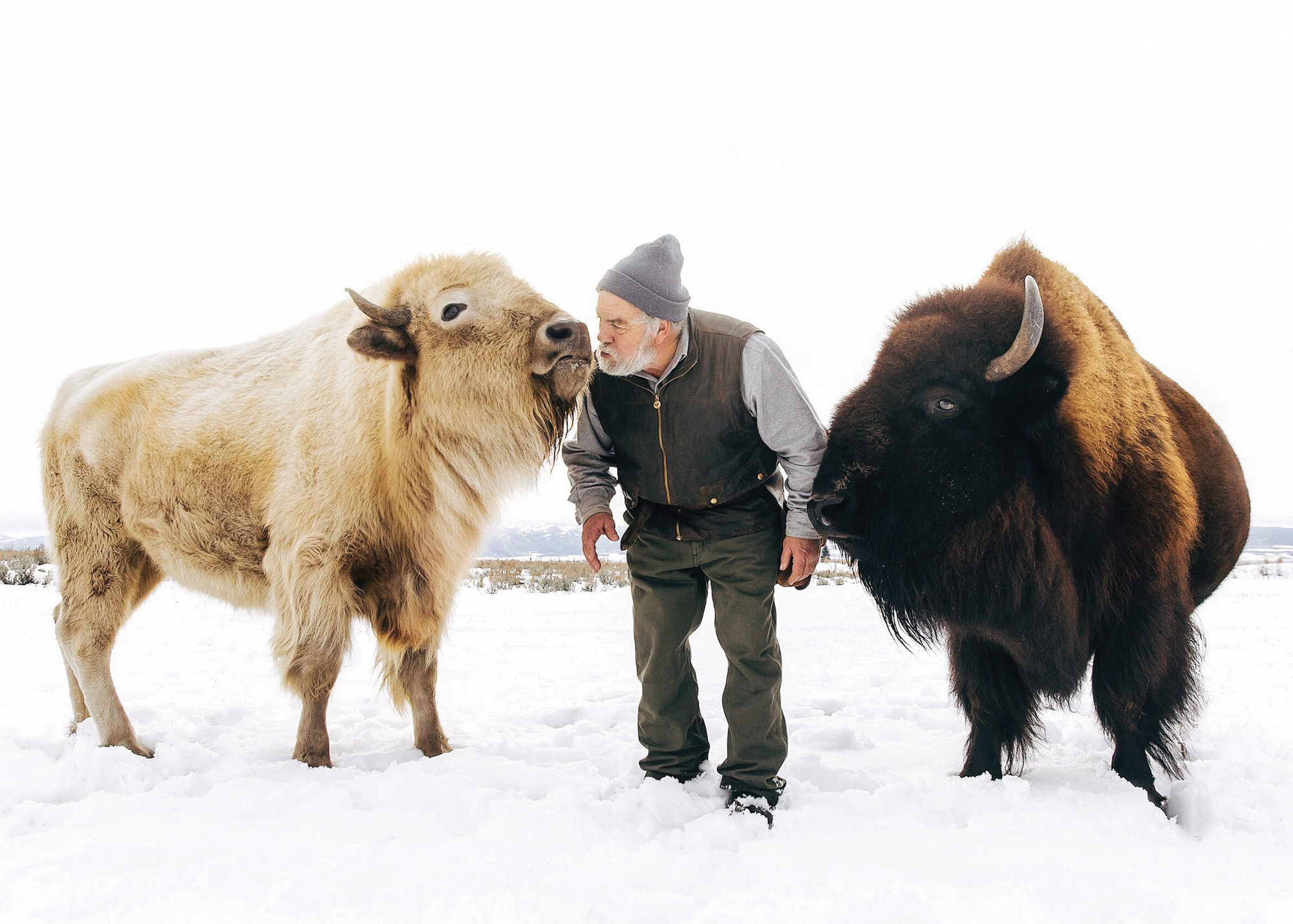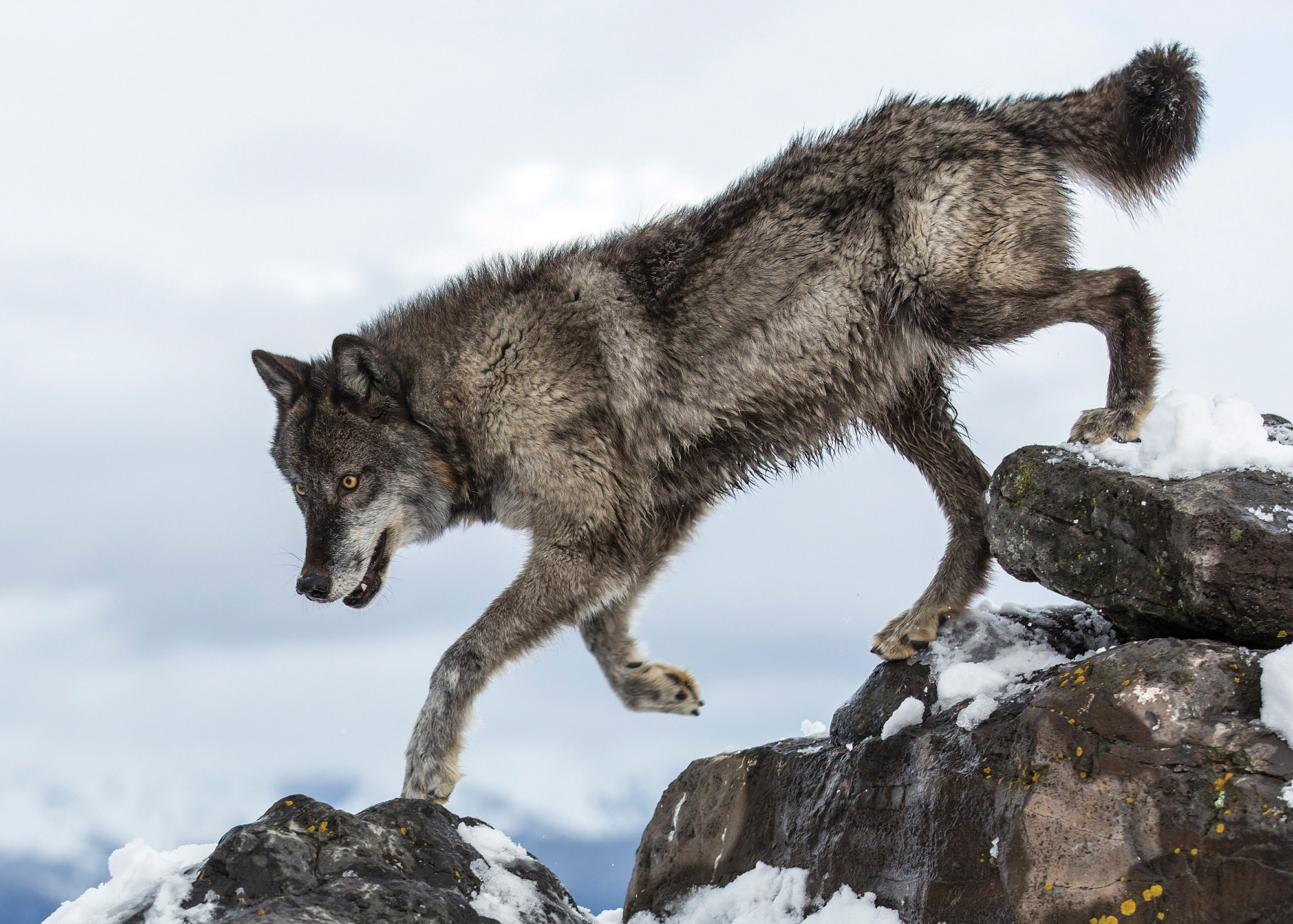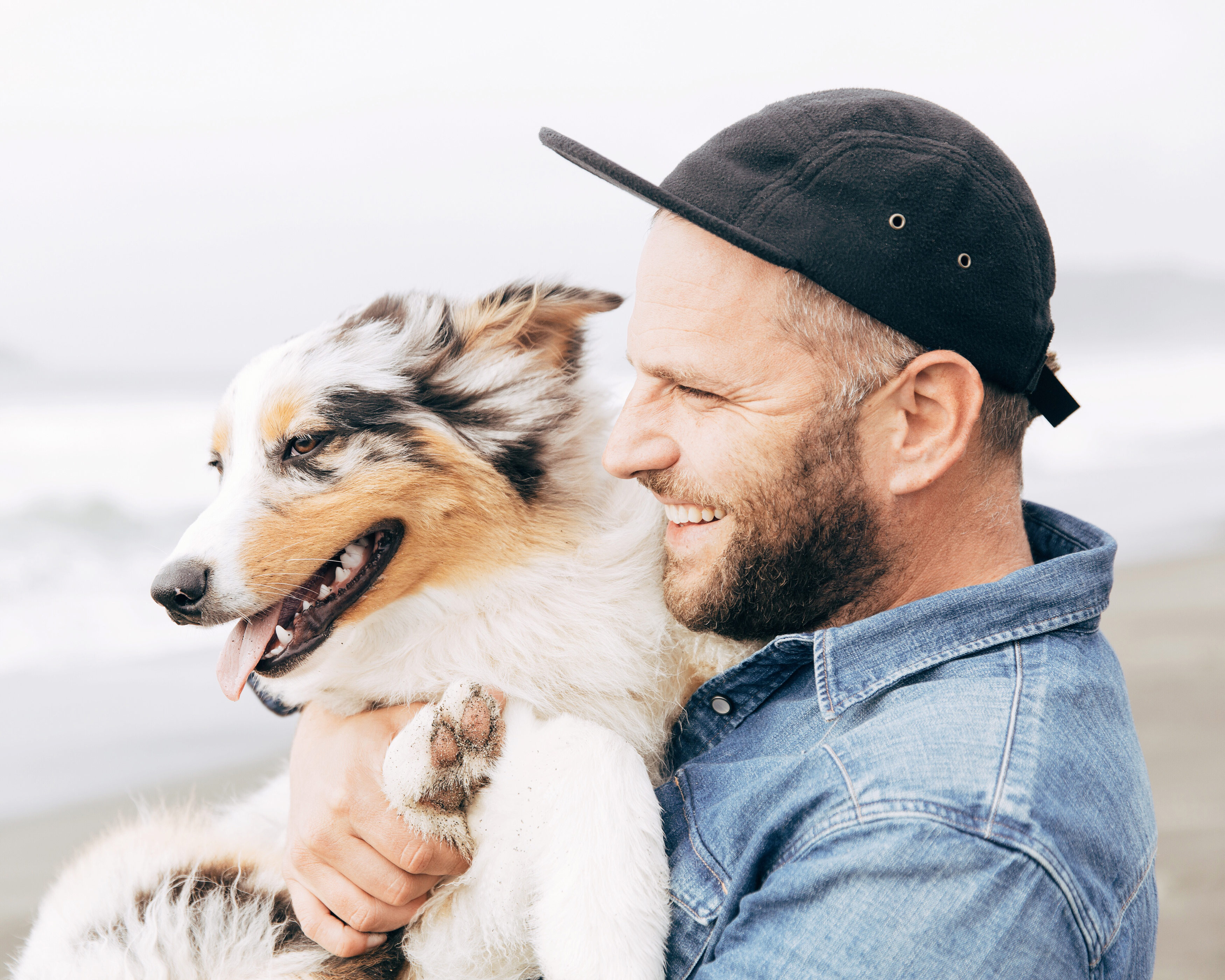
- Interview by Tina Essmaker May 14, 2015
- Photo by Tony Cross
Michael O’Neal
- photographer
Born and raised in New York, Michael O’Neal studied graphic design at the Fashion Institute of Technology. After school, he worked in advertising, developing print and TV campaigns for a range of clients. In 2003, he moved to San Francisco to join Apple’s in-house graphic design group where he helped launch a wide range of products and services. Now a full-time freelance photographer, Michael helped cofound photography collective Tinker*Mobile, is on the board of advisors for Stand and Maker, and volunteers at Earthfire Institute.
Describe your path to what you’re doing now. I’ve been painting and drawing since I was little. When it came time to go to college and I had to pick a major, I was going to choose fine art. My mom said, “I don’t know about that. You might want to go into the commercial art world.” So I chose advertising and graphic design at Fashion Institute of Technology (FIT) in Manhattan. I got lucky because I fell in love with typography and composition. I studied advertising and design for two years, and then did two years of graphic design. I’m originally from New York, so it was amazing to live in the city and have it as my campus. I grew up quickly there and learned more in a year of college than I did during all four years of high school.
When I was a senior in college, I started working at an advertising agency in New York. I later climbed the ladder from junior art director all the way up to a creative director role. I did TV spots, print advertising, collateral, and posters. I was sort of a hybrid designer and art director because I liked to concept the things and make sure they looked really great, too. The advertising guys I worked with were all about the ideas and didn’t necessarily care what the finished product looked like. I think that if it’s a good idea, but not executed well, then it’s a bad idea.
After working at a bunch of places in New York, from larger graphic design agencies to smaller graphic design studios, I had the opportunity to come out to San Francisco and work for Apple in 2003.
Wow! How did that happen? It’s a funny story. I called in sick for a week and went to Maui to assist my friend, Chris Shipman, who was doing the second round of graphics for the Apple store. He was shooting film and he brought me along to shoot digital. I met all these people who worked at Apple and after the shoot they said, “Hey, why don’t you send your portfolio out here for the in-house graphic design department?” I sent my book to Apple and went out to do a four-month freelance gig for the retail group, basically designing the look and feel for the Apple store. My first project was working on how the iTunes retail store looked in the Apple store. Steve Jobs and our creative director, Hiroki Asai, asked me to pick 200 of my favorite albums and make a grid on the store. Then Steve wrote the headline: “You say you want a revolution? iTunes Music Store 99¢ a song.” That was my introduction to Apple.
While I was working there, I became the guy who art directed lifestyle shoots, and I owned that for a bit. But I missed the feeling of being on shoots. When you’re sitting in the office and in meetings all day—it’s hard to explain, but there’s a feeling you have when you’re on set on location with a crew. It’s very collaborative in nature; you’re working with producers, models, stylists. It was cool because I moved up pretty quickly with amazing exposure to different groups across the company. By the time I left, I was a cross-functional creative director overseeing product launches across disciplines throughout the studio.
But I got a little anxious sitting in meetings, and I knew I had to make a change. Why would I leave the best job in the world as a creative director at Apple? I had the most amazing benefits and got to travel around the world to do photo and video shoots and go to retail store openings. It’s like, what is wrong with me? But I was there for about nine years and it was time to leave. It took me a long time to walk away from that security and pursue my passion for photography.
While I was at Apple, I was always shooting pictures on the side. It’s funny because I never studied photography, similar to people like Paul Octavious. We’re graphic designers turned photographers, so whatever we lack in technical abilities, we can art direct our way out of. (laughing) Anyway, it was time to make a change and, as hard as it was, it was a great decision. It’s so nice to be able to work for different clients.
Working as a graphic designer for so long definitely informs my photography, which is very clean and simple. I love shooting people and I think I am my work, if that makes sense. I don’t feel like I have a style, but people say I do. There’s an intimacy or emotional connection to the subject or landscape, and I think that’s a reflection of my personality—or the person I try to be, which is positive, outgoing, and compassionate. Hopefully my pictures look like that. They also have a lot of negative space, so they look like they were taken by a graphic designer because there’s always room for type. (laughing)
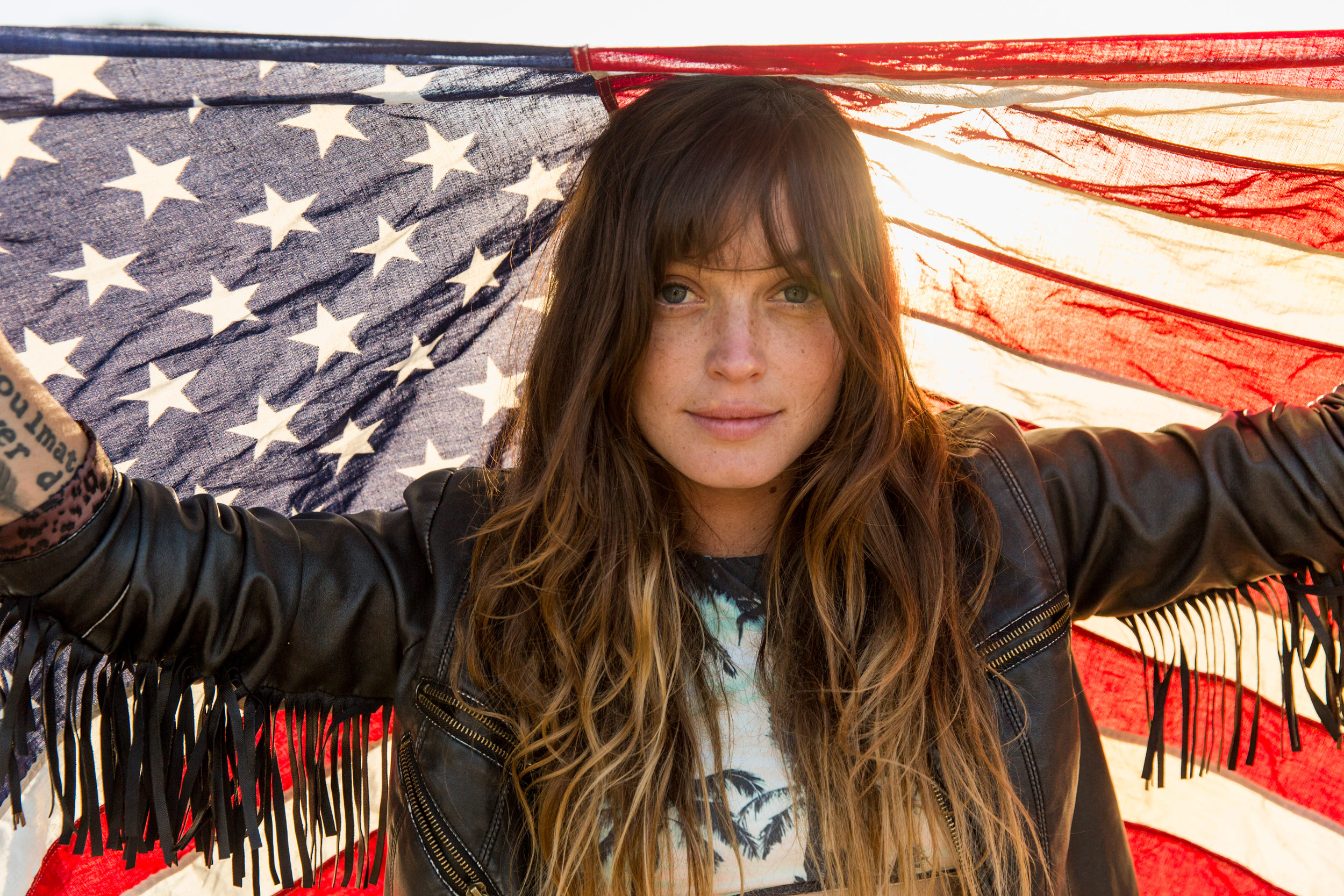
“My parents were always supportive of my interests…They got me everything I needed, whether it was a set of paints, an airbrush, a camera, or whatever I was into at the time. They were very nurturing in terms of my creativity.”
How incredible. I had no idea that you did all of that. The first time I saw your work, you had already been doing photography, so I’ve always known you as a photographer. When did you quit Apple to make the transition into freelancing? I quit in 2011. I’ve been shooting for four years now, and I still do freelance art and creative direction for Apple on occasion. You never really leave that place—we’re family.
Going back further, was creativity part of your childhood? I grew up in Staten Island, New York, and I had access to Manhattan. I visited on trips to the museum or theater, or to wander around the parks. It was great having such an inspiring place so close by.
My parents are not creative by profession, but I always considered my dad an artist; he is a diesel mechanic and worked for the city of New York for 30 years. I use a camera the same way he uses a toolbox. Because of the way he works with his tools, he’s able to fix anything and every job requires a creative approach. My mom always said, “He has hands of gold,” which I have always loved.
My parents were always supportive of my interests. They took me to life drawing classes when I was a little kid, only to drop me off and see that there was a naked model standing there. They’d wave and say, “We’ll pick you up in two hours, Michael.” They got me everything I needed, whether it was a set of paints, an airbrush, a camera, or whatever I was into at the time. They were very nurturing in terms of my creativity.
I didn’t get more serious with a camera until I was in college, but when I was younger, I always shot Polaroids. I continued to shoot Polaroids until they stopped making Time-Zero and 600 film. I have an archive of thousands of photos shot in a square format. That’s why I gravitated towards Instagram—because it’s a ratio I know so well.
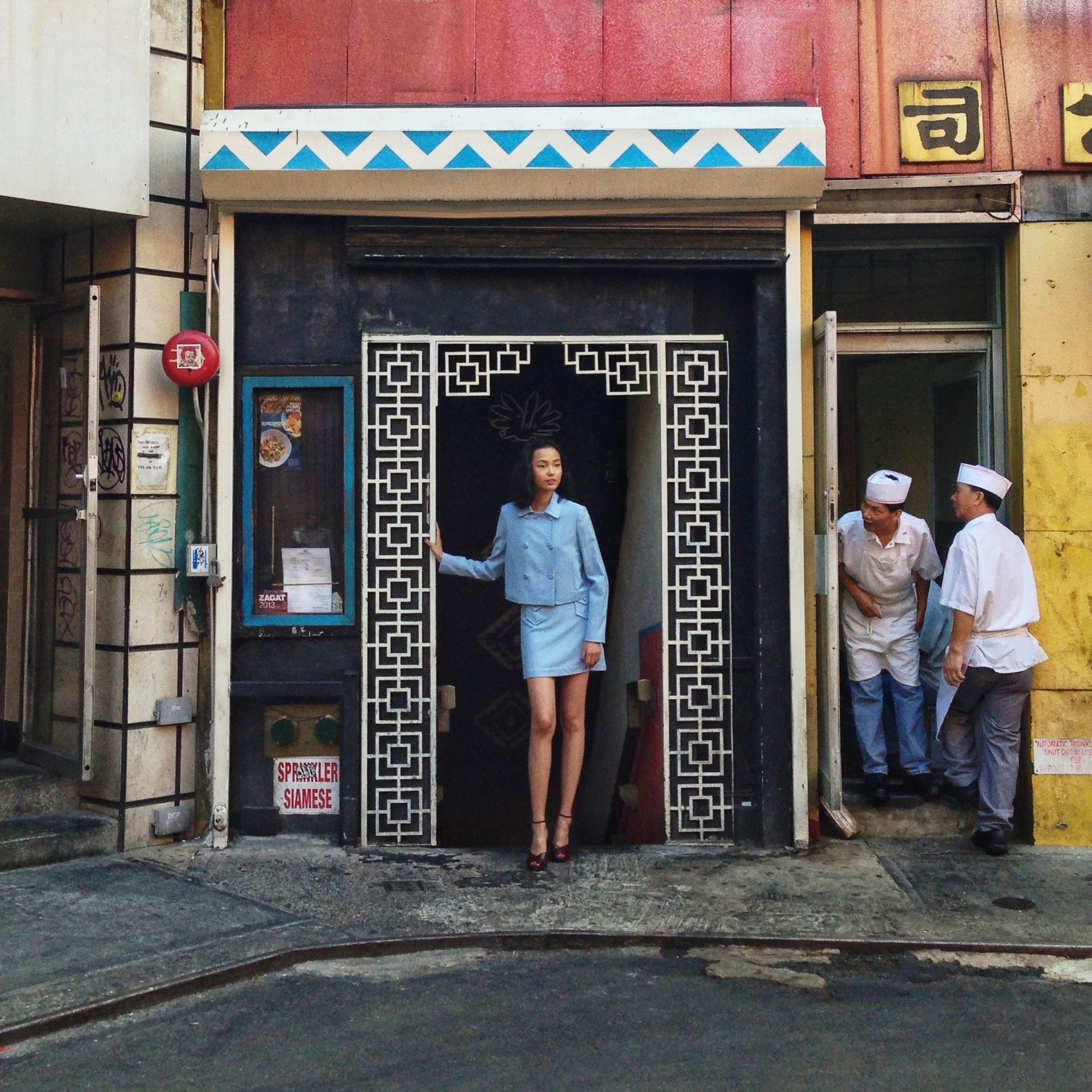
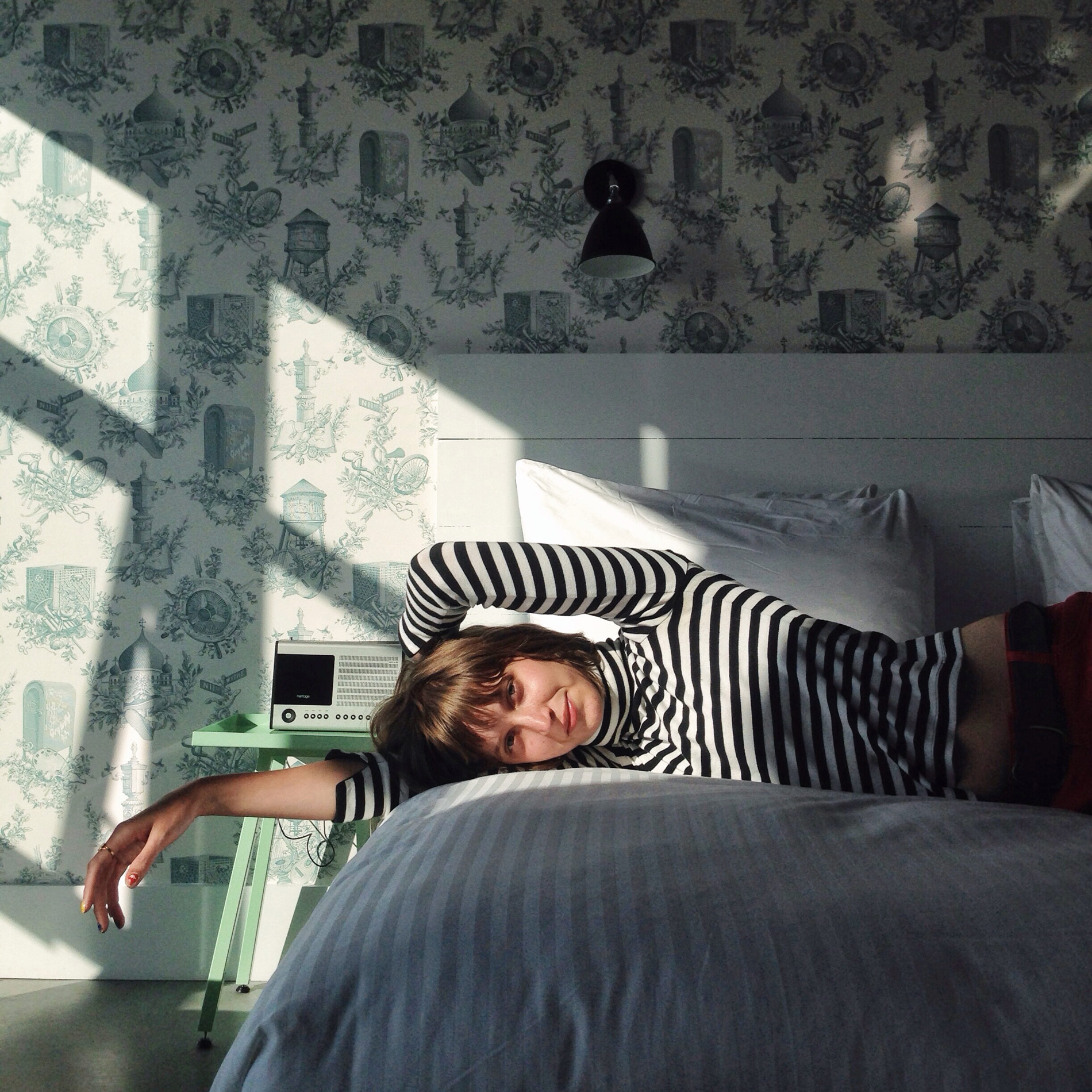
Did you have an “Aha!” moment when you knew that photography was what you wanted to pursue professionally? I think I was sitting in a meeting with the interactive team at Apple, talking about giving a presentation on analytics. Analytics are great and informative, but I didn’t want to be doing that. I wanted to be creating all of the time. As a creative director, you look at a lot of work, guide people in the right direction, and bring a great team together, but the more senior you get, the less you make with your hands. Sitting in that meeting, I had an epiphany: “I don’t want to do this anymore.” I wanted to be outside, traveling, collaborating, experiencing new places and people, and getting close to the content. I realized that I’m most happy when I have a camera in my hand. I think people noticed that and gave me the confidence to make the leap and leave.
One of my friends here in San Francisco, Tom Crabtree, is an amazing creative director, but a graphic designer at his core. He runs a studio called Manual, and he left Apple and started his own business when the economy was going down and his wife was pregnant. He had a hard first year, but is now super successful. He used to send me iMessages with pictures of feet on a diving board, telling me to “jump off and make the plunge.” (laughing) I had a great network of people who were supportive and said, “Hey, Mo, it seems like you really love this photo thing. Why don’t you give it a go? You can always come back and work in advertising.” I feel lucky because, after working in advertising for 16 years, I know a lot of art directors and producers. That made it more comfortable for me to take the leap and go out on my own.
Have you had any mentors along the way? Oh, wow. So many people. The New York-based creative director and photographer, Chris Shipman, was the one who really taught me about photography. He was doing what I’m doing now, which is a mix of creative direction and photography. He could concept and design something, but also go out and shoot it. I approach each project similarly as a design problem waiting to be solved. I ask how I can put together all of the right pieces in order to solve the puzzle.
There’s another photographer in New York named Ben Watts, who is Naomi Watts’ brother, funny enough. Ben is a fashion and lifestyle shooter who I worked with on shoots when I was at Apple. I saw how he was able to get the most out of people, and I found those interactions so inspiring—I wanted to do the same thing. When we’d do a shoot together, I’d have to go back to Apple, retouch the images, and sell them to the boss. Ben would hop on a plane to LA for his next shoot. His life was different all the time, and I liked the idea of that.
Paul Octavious, who is one of my closest and dearest friends, inspires me. His vision is so unique in the way he tells stories and his ability to create a series of work that he could continue for the rest of his life if he wanted to.
There are so many more. Joshua Allen Harris is another one. He’s a sculptor, street artist, and photographer, who I met through Instagram a couple of years ago. Jimmy Marble is another great one in LA. He subscribes to the motto of: “Don’t take photos. Make photos,” which I really like.
Has there been a point when you’ve taken a big risk to move forward? Do you think that leaving Apple was the biggest risk you’ve taken? Absolutely. After working at the same place for nine years, I was comfortable, secure, and set in my ways when it came to lifestyle. I had it in my head for a year that I wanted to leave Apple, but it took me that long to actually get the courage to do it. I was there so early on and have so many dear friends who are still there. I moved my entire life from New York to San Francisco to go to Apple, so they became my family. I gotta say though, I do miss New York.
Do you feel a responsibility to contribute to something bigger than yourself? Definitely. I’ve been trying to get involved with as many volunteer and humanitarian projects as I can. I think it’s important to space out the personal, commercial, and humanitarian work. I try to use whatever social influence I have on Instagram and Twitter to help where I can.
There’s a wildlife sanctuary in Driggs, Idaho, called Earthfire Institute. It’s a retreat for rescued wild animals. While there, you can basically have this intimate experience with incredible animals, like wolves and foxes. It’s a really beautiful, healing place. I went there to photograph for a day and shared the photos to try to get people to donate. My friend, Art Chang, just designed a new app called Priime, which I made a photo filter for, and all of the sales from the filter go to Earthfire.
There’s also an amazing girl named Vivienne Harr, who is the lemonade stand girl. I don’t know if you’ve heard about her, but Stillmotion did a documentary about her called Stand with Me. Inspired by a photo she saw of two kids working as slaves, Vivienne set up a lemonade stand for 365 days straight to raise money to end child slavery. I met this girl and was super inspired. I was asked to help organize InstaMeets all around the world on National Freedom Day, which was also the day the film was premiered. I rallied people from all over to attend meets to raise awareness about child slavery. I’m also currently on their board of advisors and helping with their social media, photography, and design.
Last year, I did a group show with Tinker Street, the picture agency/ad & art collective that I’m part of. The show was called 100–50–1 Photo Show, and it was all iPhone portraits. We donated all of the sales of the photos to 100cameras, which is a charity that gets cameras in the hands of children in marginalized communities. VSCO, Ona, and Artifact Uprising all sponsored the show, and it was amazing.
Tell me more about Tinker Street. Tinker Street is awesome. It was started by Jesse Miller, who was repping me right when I left Apple and started getting projects. I knew Jesse from hiring one of his photographers, Brooke Duthie, when I worked at Apple. Jesse took me on and then I brought in Paul Octavious, Chris Ozer, Jared Chambers, and Theron Humphrey. I said, “You need to get these guys on the roster.” Together we founded Tinker’s mobile division, which consists of over 50 photographers available for mostly social media jobs. Right now, I’m functioning as more of a creative director for the mobile division, focusing on content strategy. It’s exciting to be part of that and to bring people together while helping companies push the envelope with social media.
Are you creatively satisfied? At the end of the year when I look back at the work, I don’t usually like anything I’ve created. It sounds horrible, like I’m beating myself up, but I guess artists do that all the time. That’s what pushes me to keep going and to try harder. I ask myself, “What can I do that’s different or better?”
So, am I creatively satisfied? No, I feel like I need to be pushing myself. I’ve only been shooting professionally for four years, so I feel like I’m just scratching the surface.
What advice would you give to someone starting out? If you don’t feel challenged or scared, then you’re doing something wrong.
Be a sponge. Absorb and take in as much art, design, photography, and fashion as you can. It will only influence you to do your own thing even more.
Always have your camera with you. Shoot all the time. I know that it’s sometimes heavy to carry around, and you have your iPhone, but you should shoot all the time.
Explore your surroundings. Most people don’t know what’s around the corner from them. I’m constantly exploring, looking for new locations and chasing the light.
Oh, and be humble!
“At the end of the year when I look back at the work, I don’t usually like anything I’ve created. It sounds horrible, like I’m beating myself up, but I guess artists do that all the time. That’s what pushes me to keep going and to try harder.”
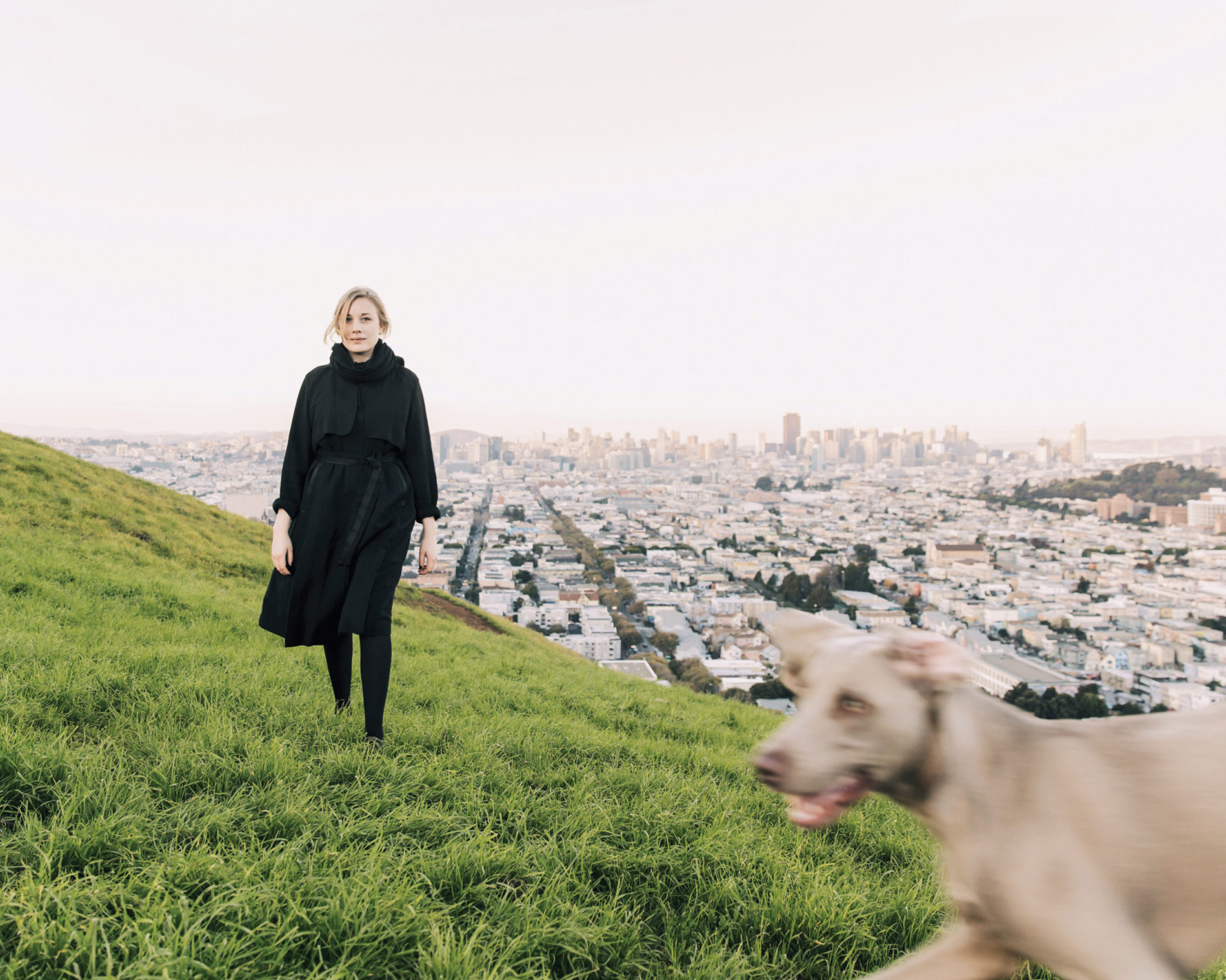
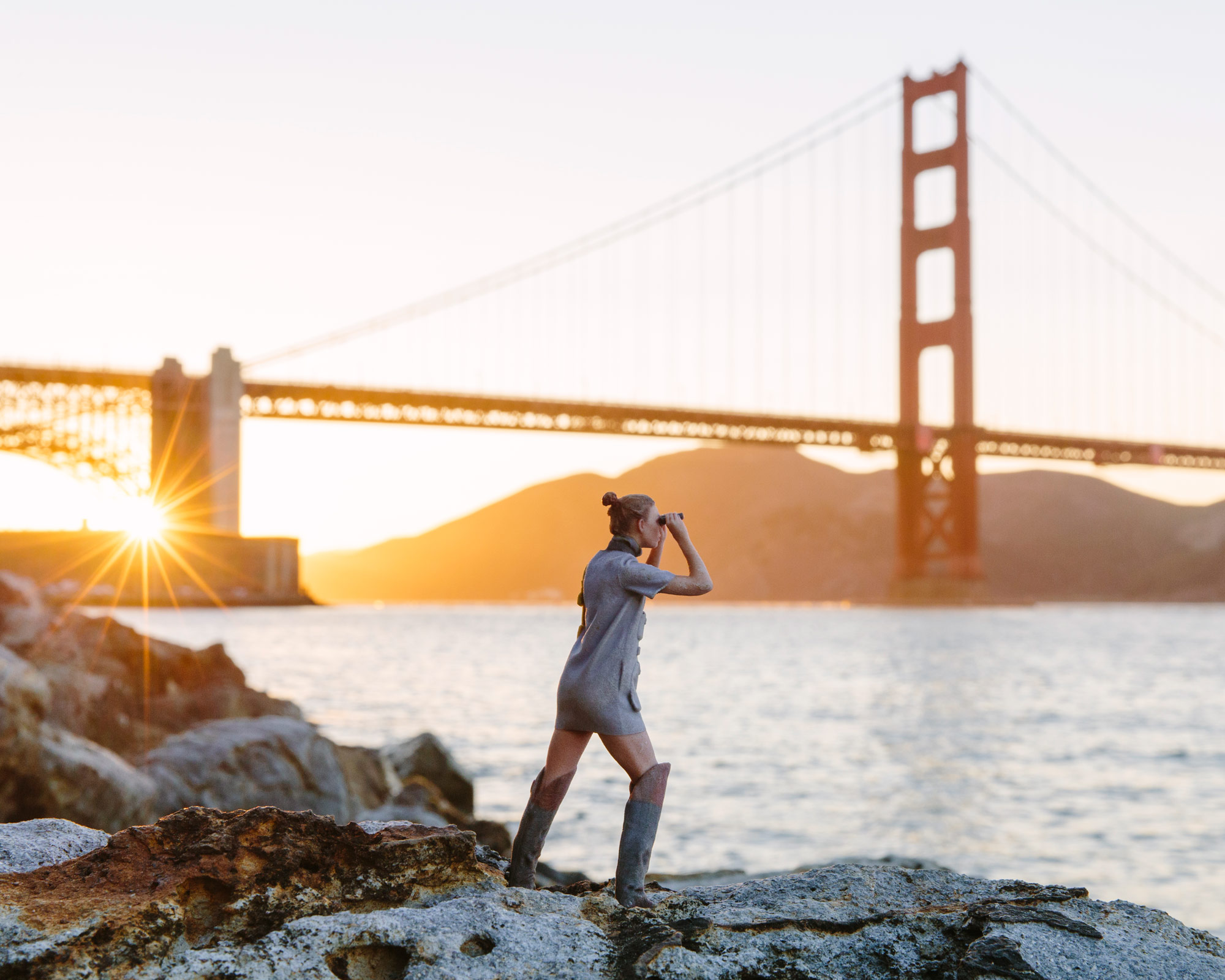
How does where you live influence the work you do? In San Francisco, there are so many beautiful locations in proximity of one another. There’s the coast and Highway 1, which goes down to Big Sur. There’s Marin just over the Golden Gate Bridge. There’s Mount Tamalpais State Park, wine country in Napa, and Lake Tahoe. There are so many places, and I find it easy to escape the city and be somewhere beautiful. I can be out of the city in 15 minutes. In that way, San Francisco is cooler than New York. The topography here is diverse. I definitely take advantage of all the vistas and hiking spots.
As far as work, I definitely do commercial work here with clients. Since San Francisco is so tech-focused, there are a lot of startups that don’t have a visual identity or imagery, so they come to me for that, and we usually shoot here in San Francisco. Once I left Apple and wasn’t commuting two hours a day down to Cupertino, I rediscovered the city again. It’s an awesome place to shoot. It doesn’t have the epicenter of creativity that New York and LA have, especially for photography, but it has a natural beauty.
Are you traveling a lot for work right now? Yes! I was in Wyoming five times last year because my good friend, Tony, moved out there from San Francisco. It’s like the Serengeti of America—it’s breathtaking. There’s the Teton Range and bison crossing the road and bald eagles. It looks fake, like a postcard. I’ve been trying to visit there often, but I just got a puppy—
Aww. My dog, Preston, is a Blue Merle. I travel a little less now that I have a pup, but I still hop on a plane when there’s a shoot abroad.
I love to travel and have been around the world for advertising clients and for personal trips. I like not knowing what’s around the next corner, because that’s how you get some of the best pictures. Look at someone like Theron Humphrey, who can’t sit still and is somewhat nomadic. He’s always capturing this great stuff and I realized that I get my best pictures when I’m doing the same thing—when I’m out and in my element. As much as I love doing a shoot in a studio with a model and art director, I’ve recently found something peaceful about being in nature with animals in a beautiful setting. The older I get, the more I want to be out in wide open spaces.
Is it important to you to be part of a creative community of people? It’s everything. It’s really all about the people to me. If apps like Instagram went away tomorrow, I’d still have a ton of lifelong friends who I’ve met through the app, which is really, really amazing. The whole community that has come out of that is mind-blowing. Connecting with people I’ve met through social media and connecting with other Tinker Street photographers who I haven’t yet met in person is something I love.
I love being a connector. I love the sense of community that photography has and how it’s brought strangers from all over the world, from all walks of life, together to be friends. I think the pictures are secondary to that. They might be the conduit to how we meet each other, but once I meet someone in person, I find that they are just as amazing as their pictures. Creative and likeminded people love to explore and push themselves to be better. I think that’s so important, and it’s the best thing a community can do for one another: to push each other as artists.
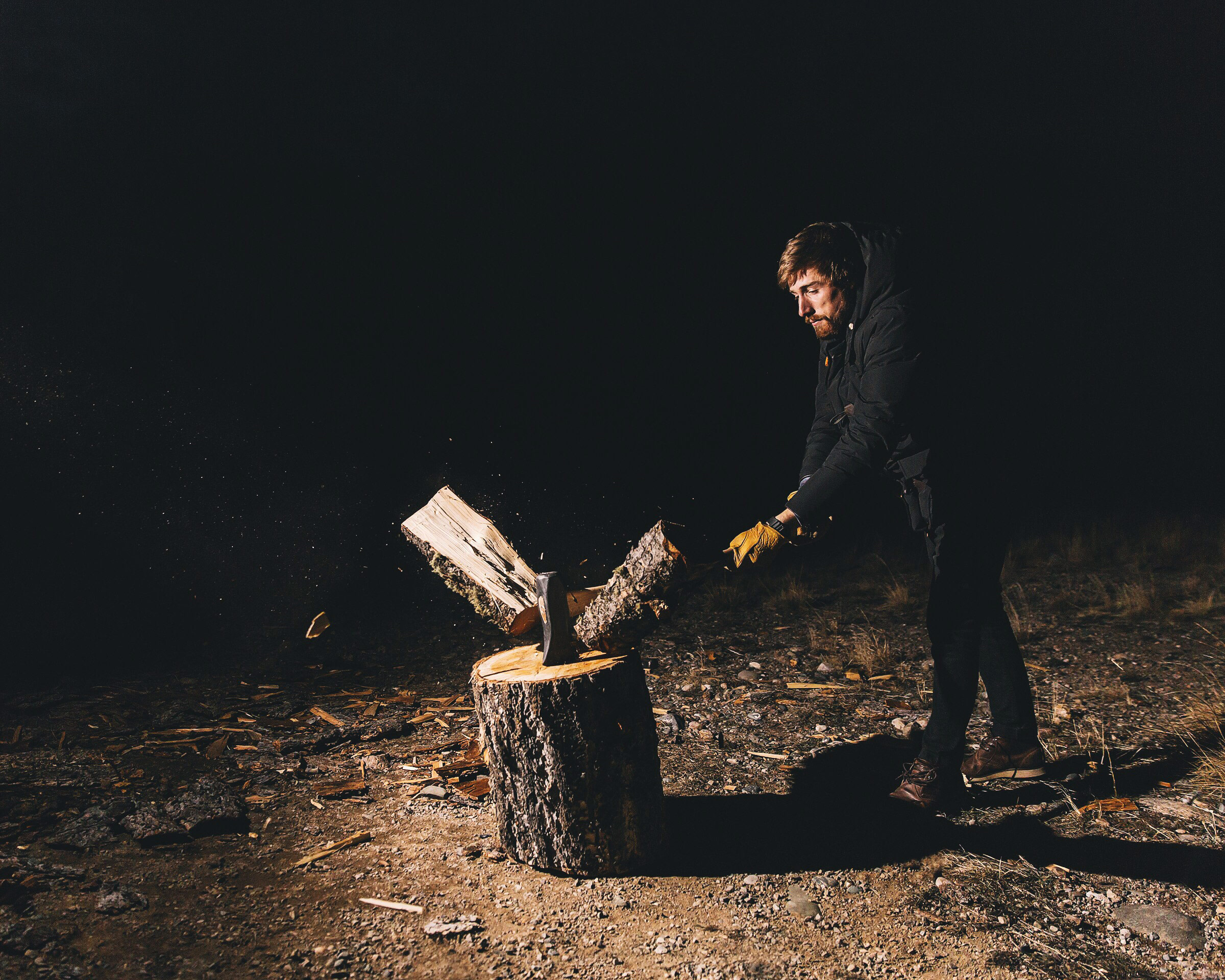
“I love the sense of community that photography has and how it’s brought strangers from all over the world, from all walks of life, together to be friends. I think the pictures are secondary to that.”
What does a typical day look like for you? You know, I’ve worked in corporate jobs for so long that I’m a free spirit right now. (laughing) My day usually starts with a French press cup of coffee and a smoothie in the morning. Then I take Preston out for a walk at one of the beautiful dog parks in San Francisco, like Bernal Hill or Mount Davidson. Then we come back and I sit and do email and conference calls for about two hours. I check in with Jesse, my agent. Then Preston and I go out for a hike and take photos every day. Right now, I’m working on building a new printed portfolio since I don’t have one—everything is so digital these days. I’m also really excited to get even more involved in my nonprofit projects, like Stand and Earthfire Institute.
It varies, though. I tend to work really hard for a week during a shoot and then take time to recharge my batteries before going back at it. As a freelancer, I’m lucky to have the luxury to do that. I’ve learned that you really need to carve time out for yourself. Now that I’m a little bit older, I want to do the personal projects that inspire me, work with brands that I am passionate about, and, most of all, for the causes I believe in.
Alright, I have one last question. What kind of legacy do you hope to leave? Oh, my god! (laughing) “Michael was a compassionate person who really tried to inspire people and bring them together.” That’s a tough one.
Do you think about it in terms of work or personal legacy, or are they one and the same for you? I want to bring the best out of myself and those around me. I want to be a good collaborator and connector who brings people together in life and work. And hopefully I’ll have inspired someone along the way. Overall, I just feel really, really blessed to do what I do for a living and to work with so many talented people.
“Creative and likeminded people love to explore and push themselves to be better. I think that’s so important, and it’s the best thing a community can do for one another…”
